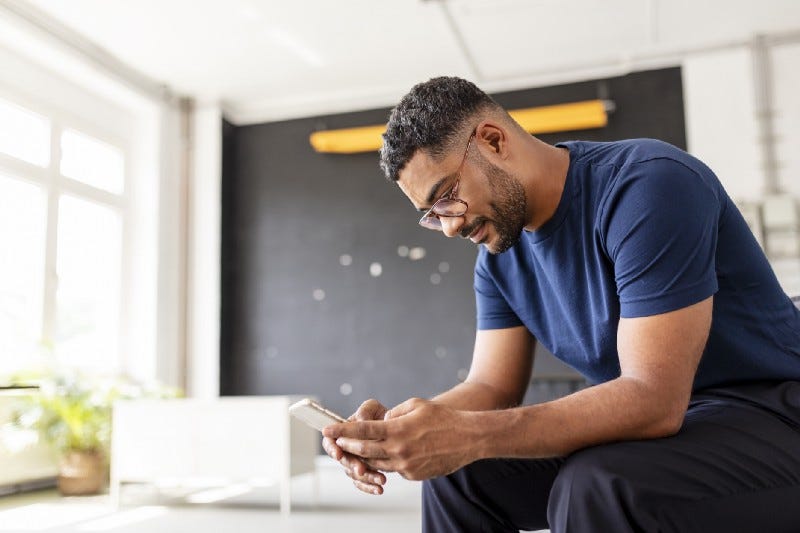Don’t Take a Break From Social Media, Manage It
As someone who recently checked my phone 1,000 times in a week, I’m finally learning how
As someone who recently checked my phone 1,000 times in a week, I’m finally learning how
A couple weeks ago, as I stared vacantly into my phone, my wife offered a gentle observation about the amount of social media I’d been consuming. Her kind implication: I was spending too much time on Facebook.
“Honey,” I replied, “it’s no big deal — I’m just checking to see if anybody outside of our house remembers that I’m still alive.”
She sighed, patted me on the head, then walked into the other room.
Alone with my thoughts and my mobile lifeline to the rest of the planet, I tried to assure myself I was only joking. But my words contained an ugly and undeniable truth: Even as I’m quarantining with my wife and two kids, the people I love most, I am starving for human connection.The numbers supported her observation. According to Apple’s Screen Time, I had picked up my phone almost one thousand times the previous week.
Look, I’m all for cutting ourselves a break during quarantine, but this is not the behavior of someone practicing self-kindness! This is a cry for help. Like an over-caffeinated Eleanor Rigby, I’ve been compulsively grabbing my phone and tapping blue logos in the hope that someone on the other side would say to me:
“I see you.”
“I miss you.”
“You have a great nose.”
I am by no means hating on social media. Full disclosure: I am very proud to have worked at Facebook for several years. It’s also important to remember that Facebook is neither inherently good nor evil (though the company has rightly fallen under scrutiny for how it handles privacy and the distribution of misleading information). Ultimately, it is how we use the platform — and social media in general — that determines whether it creates a net benefit or detriment to our lives.
Every game, ride-sharing, news, e-commerce, and music app on our phone is designed to entice us into returning as often as possible for a quick fix of those social media brain feelies (aka dopamine). LinkedIn’s “Who Viewed Your Profile?” feature is crack for narcissists. (Once, when LinkedIn was experiencing a technical glitch, the site informed me that “No one has looked at your profile in the past 90 days.” For a brief moment, I thought I had died.) Even my meditation app prods me to post inspirational quotes after each session, which seems like the exact opposite of what mediation is supposed to be about.
If we don’t consciously choose why we are interacting with these products, we permit them to turn our days into long bouts of slack-jawed navel-gazing. And that’s the problem: As useful and fun as social media can be, a quarantine is absolutely the wrong time to abdicate your mood and self-worth to an algorithm. Now more than ever, we need the nourishment of human connection, yet social media delivers all the nutrition of a TikTok — I mean a Tic Tac.
In a recent episode of my podcast, I asked Laura Delizonna, PhD, a Stanford instructor and expert on the science of happiness, how we can protect ourselves from self-defeating behavior while sheltering in place. She answered by citing the work of psychiatrist and concentration camp-survivor Viktor Frankl: “Between a stimulus and a response is a space, and in that space, we have the power to choose our response.” That moment is our opportunity to make the healthy choice, but to do that, Delizonna pointed out, it’s important “to pause and to notice that you do have a choice to get off autopilot.” We have the power to pick up an apple instead of a bag of Cool Ranch Doritos. To pour a virgin spritzer instead of another vodka tonic. To pat your husband on the head instead of calling him a “hopeless digital junkie.”
In other words, the best way to deal with feelings of isolation is to strike a healthy balance. I’m not quitting Facebook or the other social media platforms any time soon, but I am trying to recognize the types of moments Delizonna mentions. I have picked up my phone 13% fewer times in recent weeks. It’s still too much, but I’m improving.
You Don’t Have to Quit Social Media
Getting off the ‘gram probably won’t improve your lifeforge.medium.com
If you’d like to reduce the amount of time you spend gazing at your mobile, consider these steps:
Turn off notifications. The more you can avoid the temptation to dive into the vortex of apps, the more time you’ll have for life-affirming activities like exercising, reading, or talking to another person in real time.
Acknowledge and pause. When you feel the urge to engage in some digital grazing, recognize this as either a genuine desire to connect or a dopamine craving for which there are some really good alternatives.
Replace the suboptimal behavior with something healthier. You can still pick up your phone, but instead of surfing the socials, click on “Contacts” and go old-school: Make a phone call. Or seize the moment to organize a virtual happy hour. I was very skeptical about this concept at first, but have found these gatherings far more gratifying than I imagined. I still can’t fist bump my buddies or punch them in their dumb shoulders, but Zoom’s droplet-free interface delivers smiles, laughter, or even shared tears if that’s what the situation calls for.
You’re not going to get this right at first or even after many attempts, and that’s okay. Now is no time to beat yourself up for not being perfect. But if you practice the process of acknowledging, pausing, and replacing, you can still use social media without letting it run your life.
Because you are alive, you do matter, and you really do have a terrific nose.



